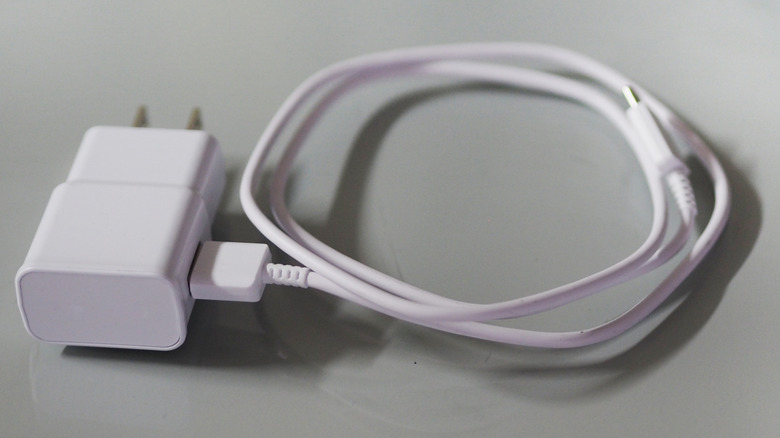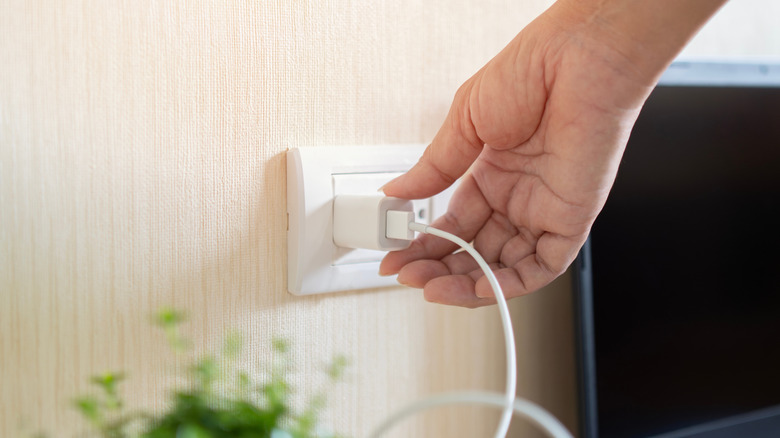Do Phone Chargers Use Electricity When Not In Use?
Without phone chargers, our smartphones would be little more than neatly designed rectangular weights. The roles these essential accessories play in the functionality of our device is unquestionable, as is their ease of use and convenience. To make things even easier, many opt to keep their phone charger plugged in all day even when it's not in use, allowing quick access to the charger when it does come time to power the device. But is doing so upping your electricity bill?
In truth, the energy consumed by an inactive phone charger is nothing to panic over. As with USB sockets and similar appliances, most phone chargers aren't able to be switched off at any point to allow it to detect any incoming device that needs to be charged. When plugged in to an outlet and not in use, your charger will consume power on a standby mode that equates to no more than 0.5 watts of electricity.
This can vary slightly depending on where you live, as ZDNET writer Adrian Kingsley-Hughes tested out in 2020. After leaving their genuine iPhone charger plugged in for a few days and testing with a power meter, Kingsley-Hughes determined that the charger would consume upwards of 135 watts a month in such a state. This would add between $0.20 and $0.46 to the electric bill depending on where you reside, with Hawaii sporting the highest American residential power rates on average.
It's still not the best idea to leave your charger plugged in all day
Just because your phone charger won't eat up more than a couple of cents worth of energy doesn't mean that leaving it plugged in is a good idea. Chances are you don't have only one charger in your possession, but rather several being plugged up at any given time, whether from your own multitude of devices or those from other household members. Overtime, this excess use can bring about damage to more than your bank account.
Not all chargers are made equal and this can have a noticeable effect on their energy consumption when not in use. Lower-quality cheap chargers, while not as bad as some make them out to be overall, have been found to consume up to 20 times more energy than those made by your phone's manufacturer. Some older or cheaper chargers can also prove to be dangerous, as they can overheat and spark a fire when left plugged in for too long. There's also the environmental concerns involved, as wasted energy creates CO2 emissions that are harmful to our planet.
The easiest way to combat this is to get into the habit of unplugging your charger when it's not in use. However, manufacturers have also introduced their own methods of dealing with these issues, such as modern chargers with automatic power-off features and extension cords with specific switches for each attached charger. There are also an array of smart sockets and plugs available that allow you to better control your power sources directly from your phone.

